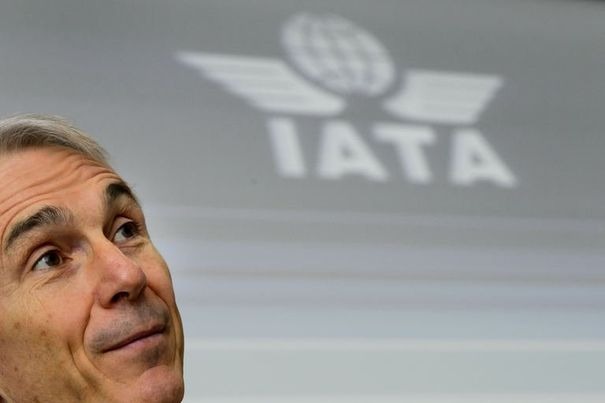
(AFP Photo/Fabrice Coffrini)
The International Air Transport Association (IATA) said that air traffic companies operating in the Middle East experienced a 10.6% rise in demand, the largest increase seen worldwide in comparison to other regions, with a recent report stating that “the region’s absorptive capacity growth rate has risen 9.7%, leading to a 0.7% increase in average freight capacity, reaching 77.7%, the highest rate ever recorded in the region”.
IATA further stated that demand for passenger air traffic transport in the region rose 3.7% in February 2013 compared to the same time last year, a factor “which has helped improve worldwide confidence in the sector”.
The IATA report stated that such growth rates come in addition to previous improvements seen in the air transport sector within the past several months. The report highlights October 2012 as a turning point for the market, with a 9% increase in demand recorded. This is in addition to the doubling of sector growth rates for the first nine months of 2012.
Tony Tyler, general director and CEO of the IATA, said that the market’s performance during February 2013 was good news for the sector, and that overall demand for air travel continued to rise, strengthening businessmen and investor confidence in the market, ushering in a period of relative economic optimism.
He pointed out that most of the sector’s growth took place in developing markets, whereas the European sector saw a decrease in its growth rates, with the Cypriot banking crisis bringing back to the forefront those problems which previously had been plaguing the Eurozone as a whole. This came alongside a 1% increase in its absorptive capacity growth rate, bringing its average freight capacity up to 77.1%.
Tyler added that many airline companies were keen on working to administer their absorptive capabilities, hoping to help sustain continued rates of growth, which would help protect the sector’s profits at a time when worldwide oil prices were increasing.
He went on to say that recorded increases in demand for the transport of international passengers in the month of February increased 3.6% compared to the same time during the previous year, and 0.9% compared to the previous January. The sector’s absorptive capacities increased 1.1% during this time compared to February 2012, while freight capacity factors rose 1.8%, reaching 76.3%.
Tyler said that air traffic in the Asia and the Pacific regions also witnessed a 4.5% increase in capacity, compared to February 2012, pointing to improvements in the Chinese economy and the Asian region as a whole as that which have worked to increase demand for passenger flights in the region.
This strong performance has worked to increase demand for air traffic in the Asian and Pacific regions, which subsequently has led to increases in air traffic worldwide. European airlines experienced a 0.8% growth rate in February 2013 compared to February 2012, a fact which could be attributed to the shrinking of the European economy during the fourth quarter of 2012. European airlines, he said, had not seen increase in demand for international flights since October 2012.
Tyler said that international flights leaving from North America increased 0.3% in February 2013 compared to the same time last year.
He added that strong economic growth rates for countries in South America, such as Columbia, whose exports have experienced an increase in demand worldwide, have also led to increases in passenger demand in the air traffic sector. A 7.7% increase in African air-traffic in February 2013 compared to the same time last year, placed it as the sector’s second fastest growing region worldwide, after the Middle East, with the region’s absorptive capacity increasing 3.9%, with increases in freight capacities increasing 2.35%, reaching 65.2%.




